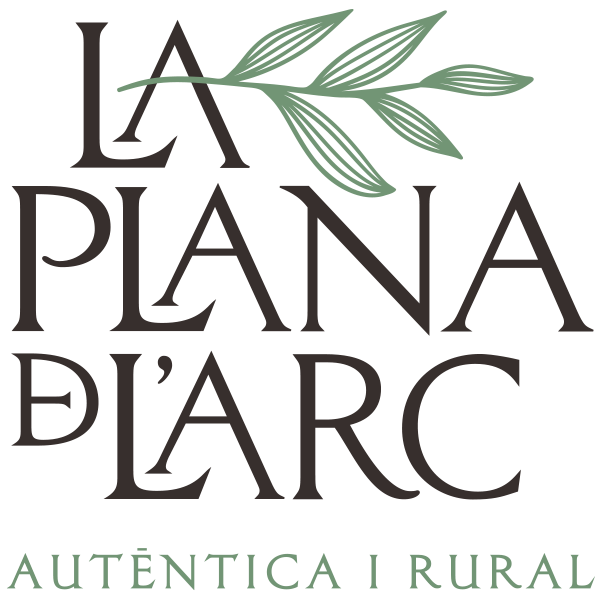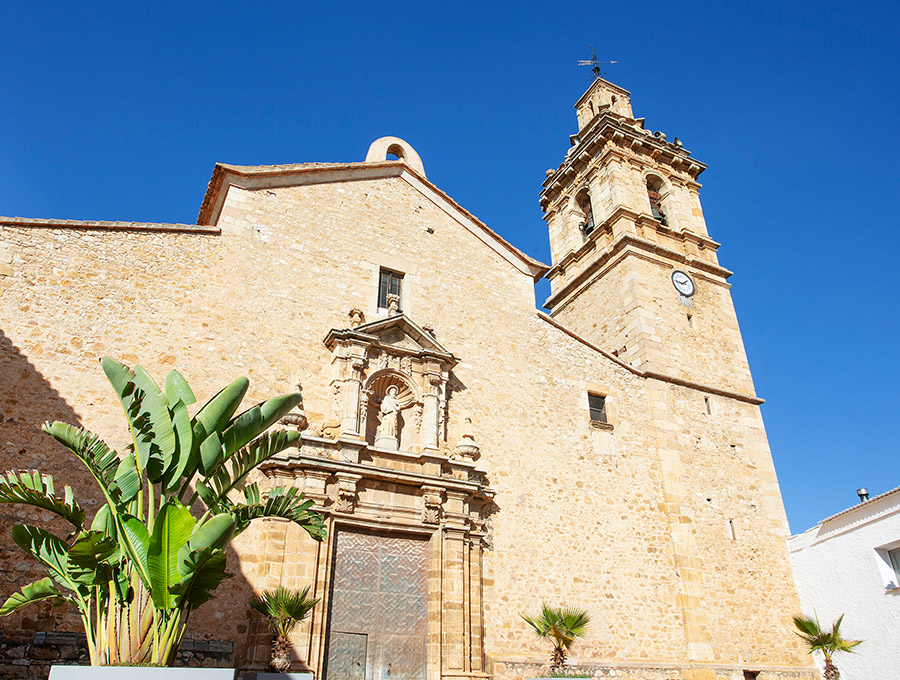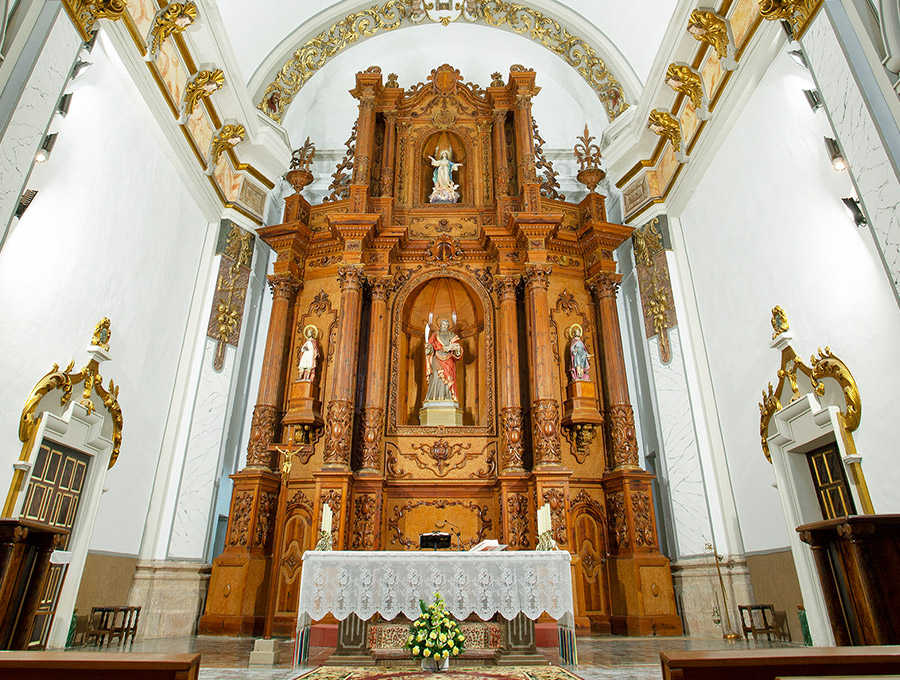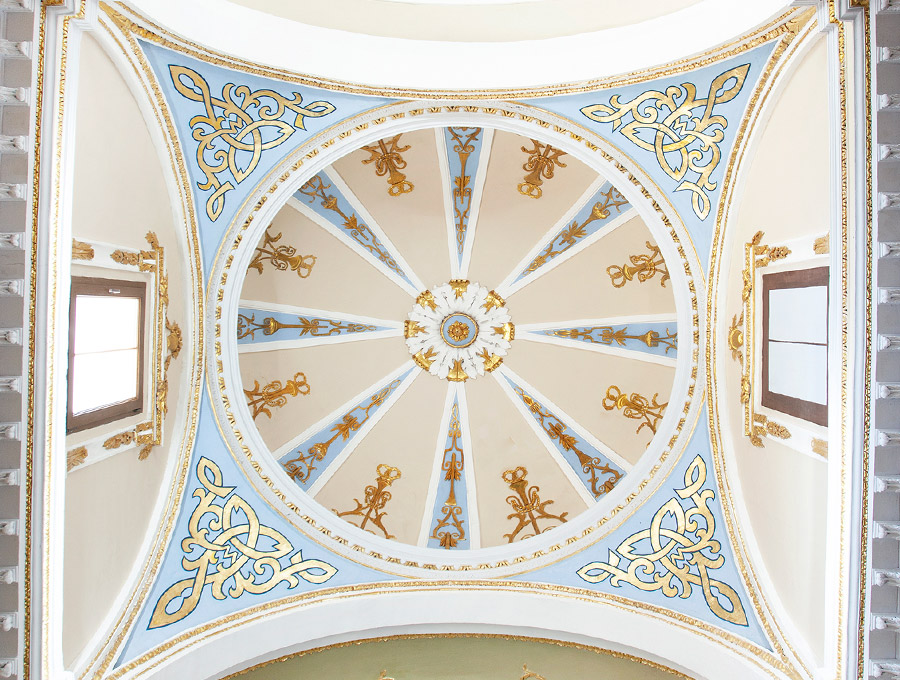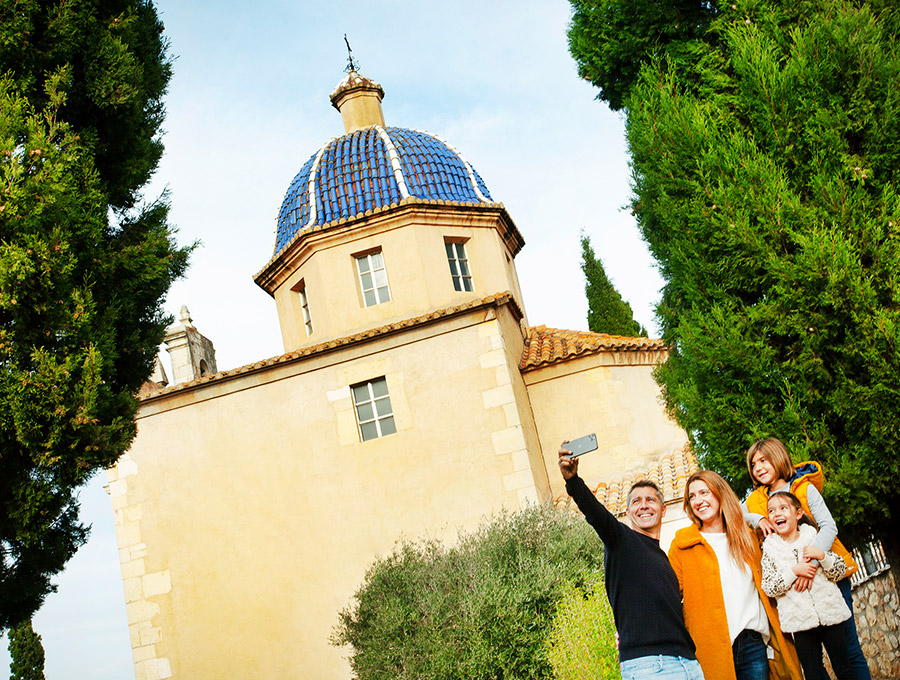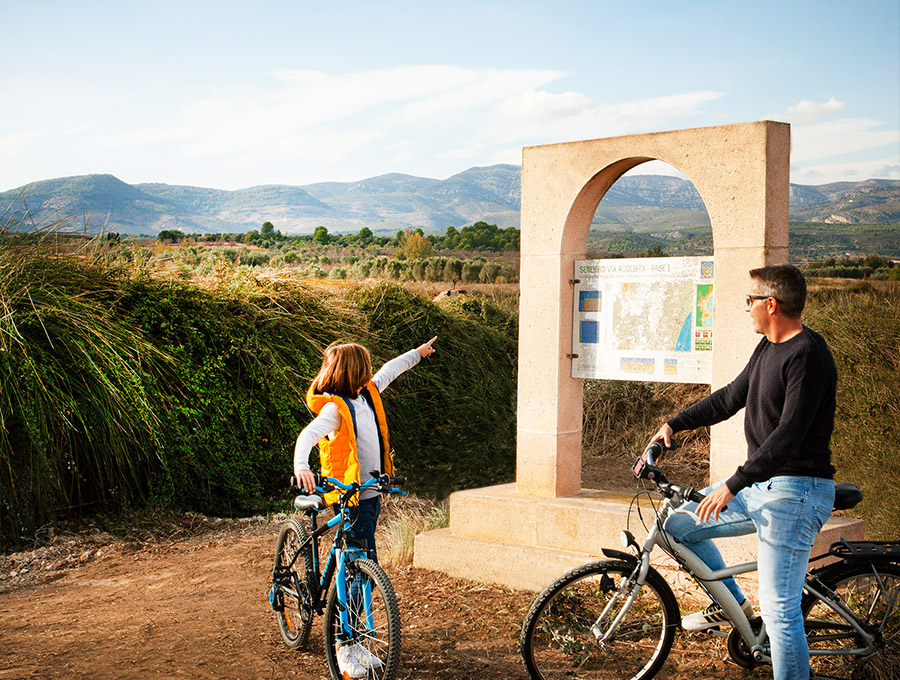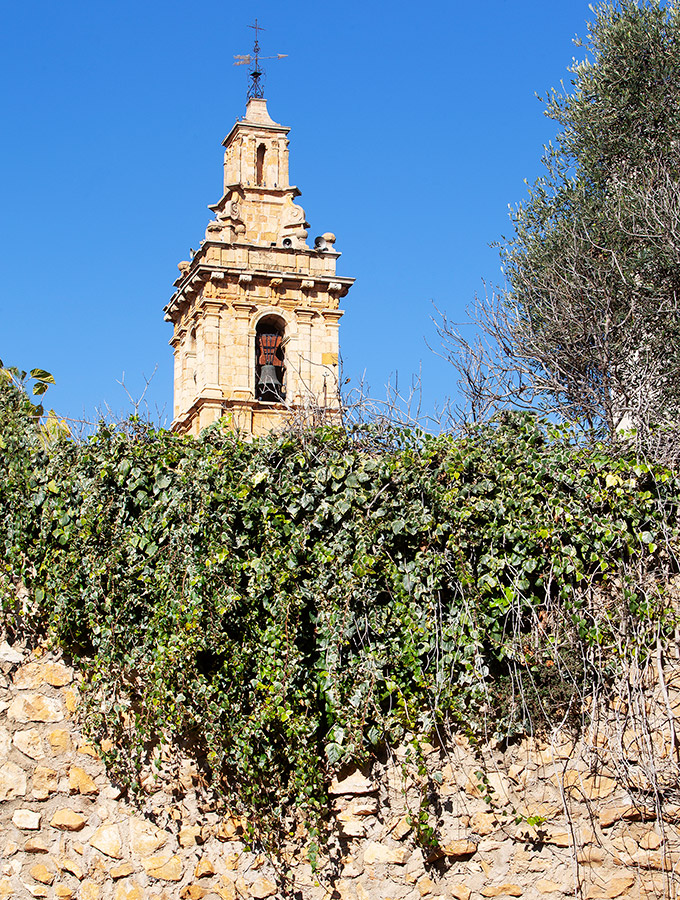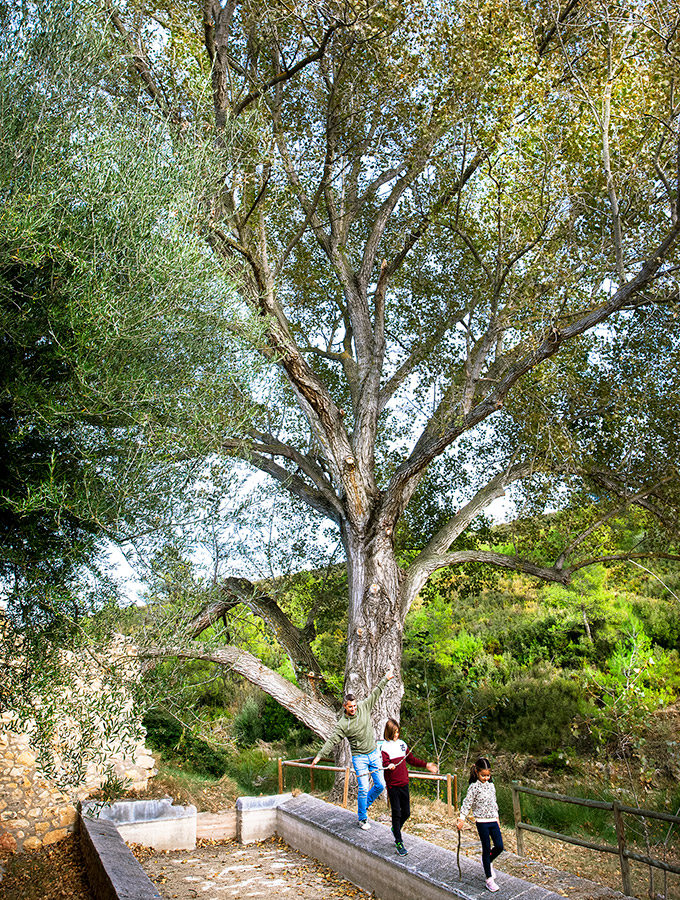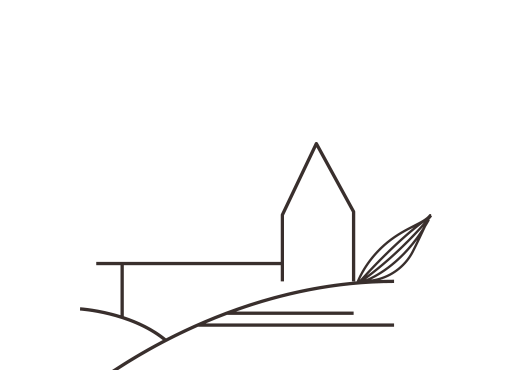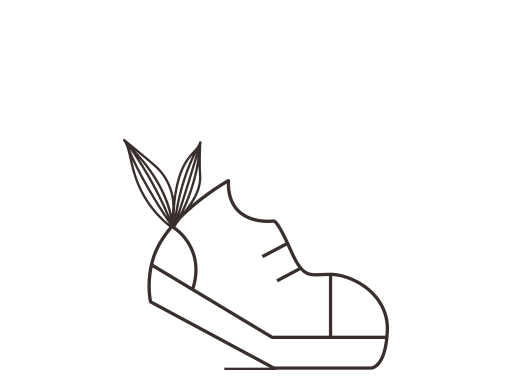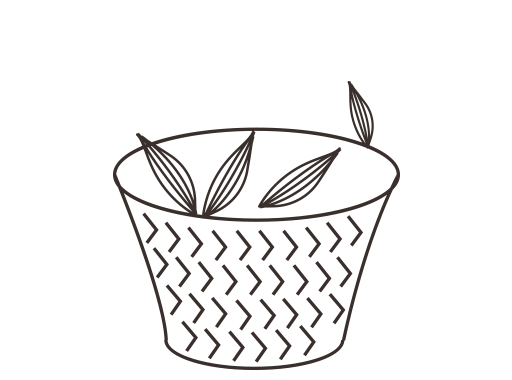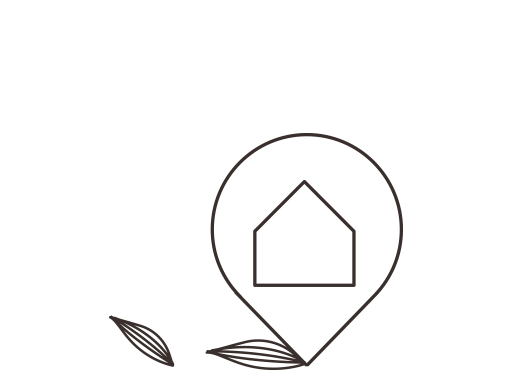Things to see in
Vilanova d’Alcolea
Where all roads meet
Vilanova d’Alcolea enjoys the magical combination of having been a land loved by different cultures, which have left their mark, and a strategic location for travel routes. The secrets that attract travellers to Vilanova d’Alcolea are so rich that they unite innovation and history through their cultural and archaeological heritage, including flour mills, Ildum and Via Augusta.
Nature, history and cultural tradition
RELIGIOUS BUILDINGS
Sant Bertomeu Church
This church was built in the 17th century on exactly the same site where the castle used to stand. The apse is preserved in the present-day church. Throughout the 18th century it underwent several alterations that gave it its current layout. In 1740 the classicist façade that we see today was created. In a niche in the centre, the image of Sant Bartomeu, the town’s patron saint, stands out. The church has three naves. Some pieces of precious metalwork are preserved, including a 16th-century chalice. In addition to spectacular bells, such as the bell of Sant Bartomeu from 1820 with a diameter of 105 cm, a height of 80 cm and a weight of 680 kg, the tower also contains the winding mechanism that operated the clock from 1892.
Calvari
Calvari Hermitage in Vilanova d’Alcolea has 14 chapels around it and was built between the 17th and 18th centuries by the Franciscans. The Calvary is a reproduction of the Stations of the Cross in Jerusalem. Thus, at the foot of the slope, it begins with the first station: a chapel built of cut stone. Inside there is a painting on ceramics depicting Jesus being sentenced to death. As you go up the terraced plots of land, you pass through eleven chapels decorated with 18th-century ceramics from Onda and Alcora. When you reach the top, there is an esplanade where Calvari Hermitage is located with the crucified Christ presiding over the High Altar. This is the twelfth chapel. Outside, to the right, there are two more chapels that complete the Stations of the Cross.
ARCHAEOLOGICAL SITES
Section of Via Augusta
Did you know that, along many stretches, the Mediterranean motorway follows the same route as Via Augusta? Past and present come together in something as essential as roads. During Roman rule, the most perfect road system in ancient times was built. A network of fast and safe roads or highways was built to link the most distant points with the centre of the empire: Rome. Officials, merchants, soldiers and other travellers passed along it. The stretch that goes through Vilanova d’Alcolea linked Gades (Cadiz) with Rome. Olive oil, wheat, horses, etc. were transported along this route. And … they even had signage, yes, signposts that lead you to places as special as this. For example, in Hostalot, there is a millarium or milestone, which was an information sign to calculate distances on the most important roads. It is on public display on the ground floor of Vilanova Town Hall.
Section of wall
Let the power of the centuries come to meet you. In Vilanova d’Alcolea, the remains of the wall dating back to medieval times are still preserved in the municipality.
Hostalot-Ildum archaeological site
Just like when we travel today, mansions were built along Via Augusta where travellers could rest or change horses. It was a well-established service that ensured regular delivery of correspondence and orders. The mansion used to have a ground floor, entrance hall, courtyard and garden, travellers’ rooms, and a dining room, kitchen and storeroom. The owners’ quarters were on the first floor. A real guesthouse from the period. Vilanova has Ildum mansion in the Hostalot district. 600 m² of the site has been excavated and architectural remains and various materials dating from the 2nd and 3rd centuries AD have been documented, including the burial of a young woman with one hand placed on her pubis and the other holding a small glass vase.
COUNTRYSIDE SPOTS
Assut countryside spot
This spot, surrounded by large poplars and white elms, is in the Hostalot district, near Via Augusta and Ildum. Its name “Assut” comes from a type of water barrier in the area. “Assut” actually means “sluice”, i.e. a place where a stone barrier was created so that water accumulated between the “Carrasqueta” ravine and the Vilanova River. The area around the “Assut” site, next to a stretch of the Vilanova River (“Barranc de les Passeres”), was declared a Wildlife Reserve in 2015, as its waters contain some species of amphibians that are unique in Europe. “Xop de l’Assut” was declared a Monumental Tree, in accordance with Valencian Government Act 4/2006 of 19 May on Monumental Tree Heritage in the Valencian Community. A place not to be missed.
Font de Calaf countryside spot
This geography will be engraved on your memory with the remembrance of the sound of water dancing. Located in the “Mas de Calaf” area. It is a very beautiful spot with one of the best springs with very high quality water, barbecue facilities and stone tables under magnificent black poplars.
